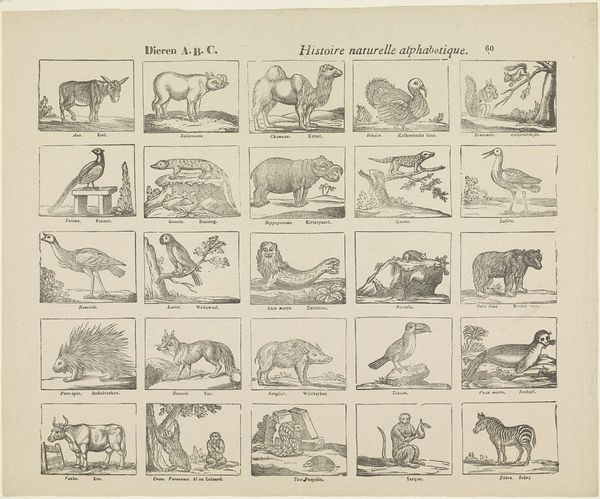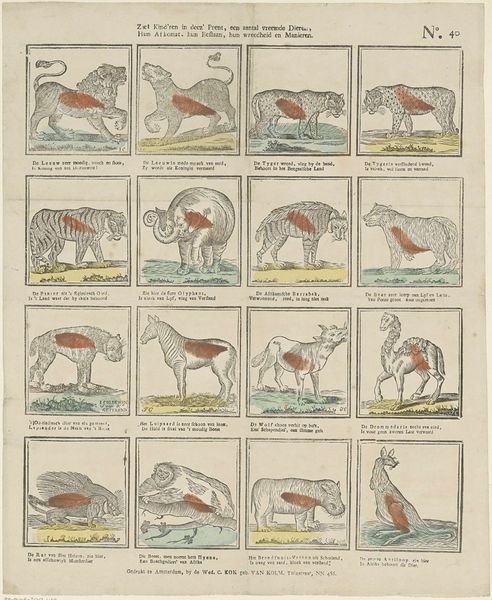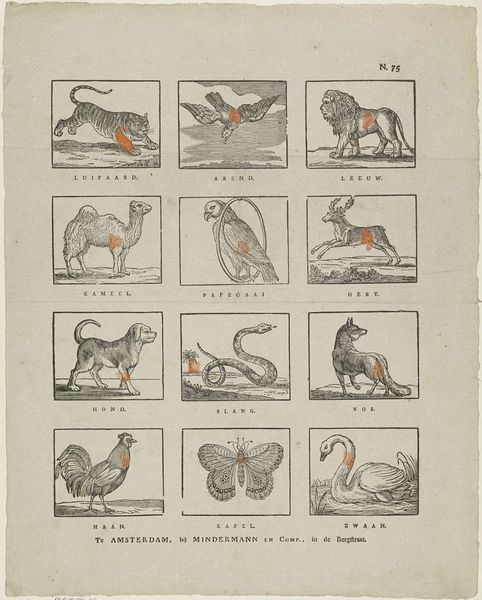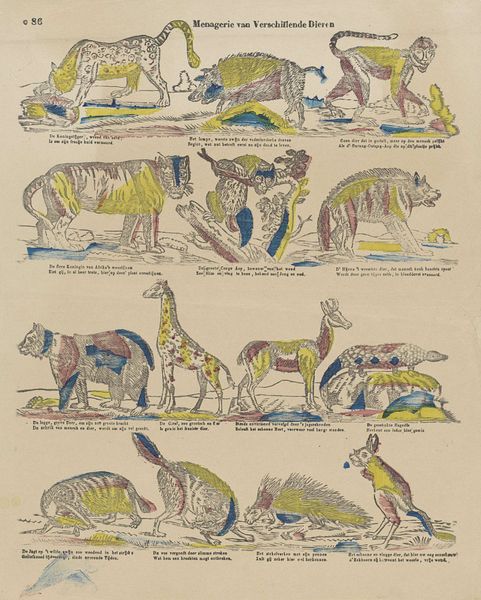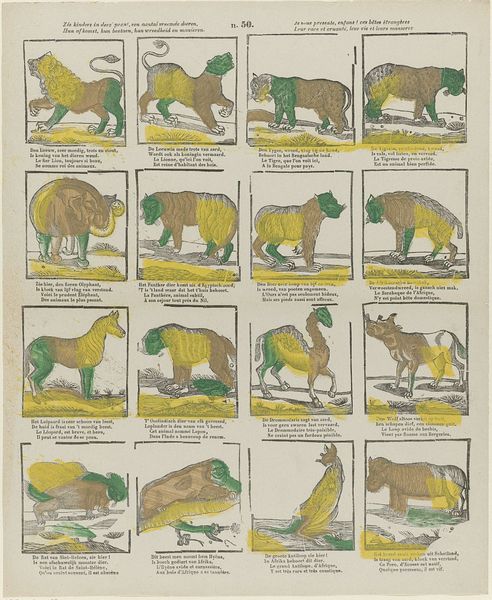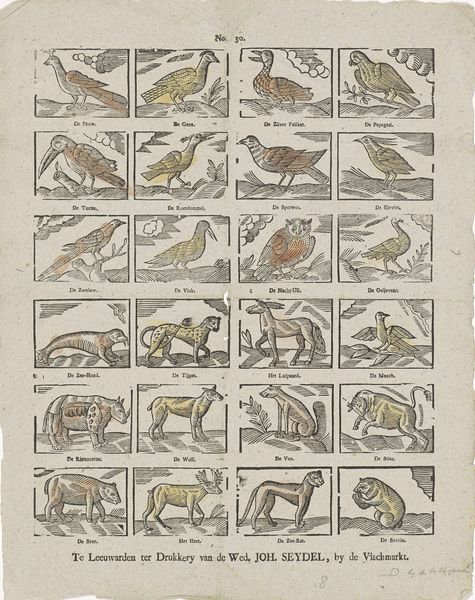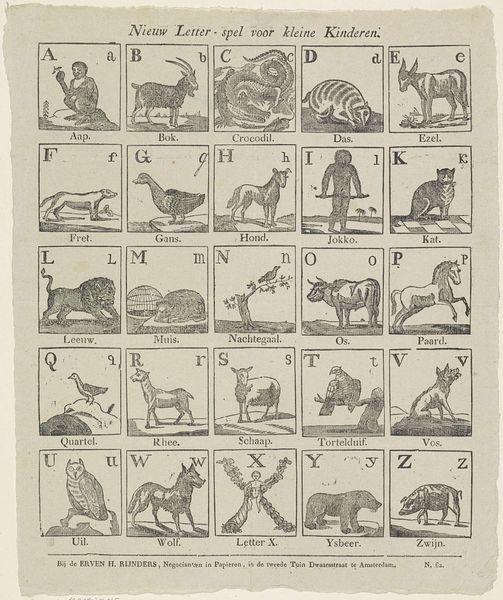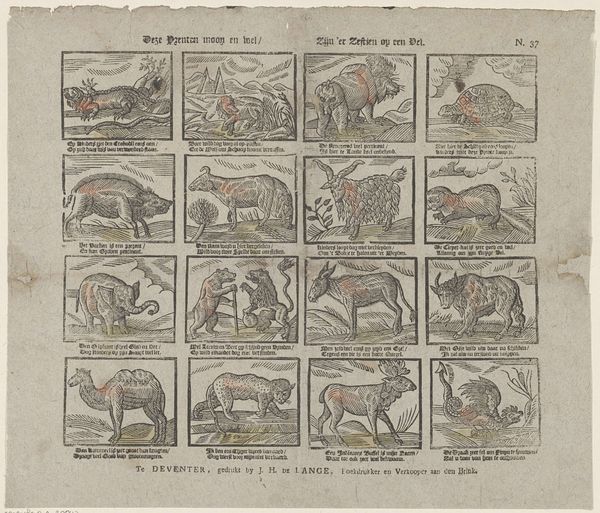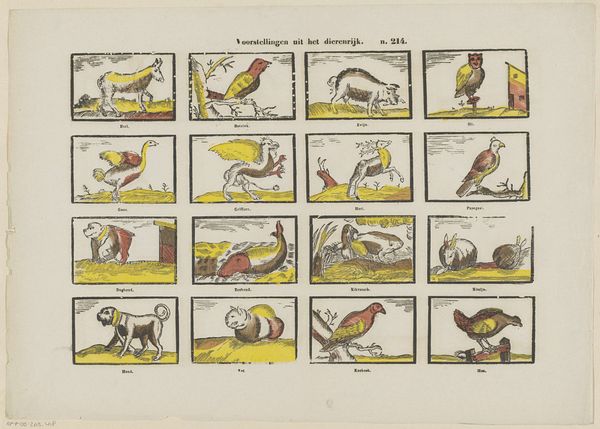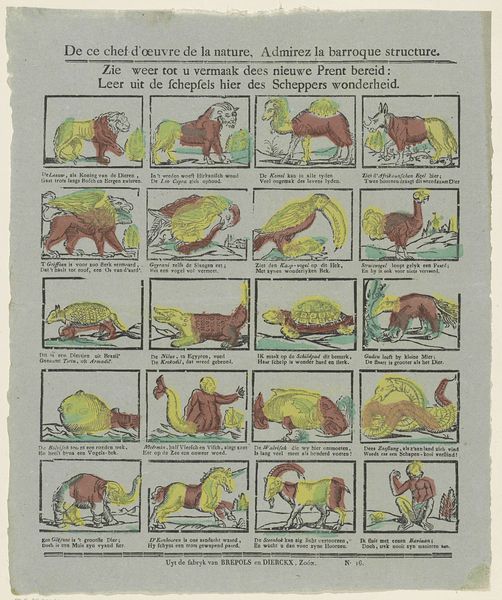
Dieren A.B.C. / histoire naturelle alphabetique 1800 - 1833
0:00
0:00
drawing, graphic-art, print, etching, paper, engraving
#
drawing
#
graphic-art
#
comic strip sketch
#
narrative-art
# print
#
etching
#
cartoon sketch
#
paper
#
personal sketchbook
#
sketchwork
#
ink drawing experimentation
#
pen work
#
sketchbook drawing
#
history-painting
#
storyboard and sketchbook work
#
naturalism
#
sketchbook art
#
engraving
#
doodle art
Dimensions: height 313 mm, width 382 mm
Copyright: Rijks Museum: Open Domain
Editor: Here we have "Dieren A.B.C. / histoire naturelle alphabetique" by Philippus Jacobus Brepols, created sometime between 1800 and 1833. It’s an etching on paper, a grid of animal illustrations. The images almost have a storybook feel, a bestiary of sorts. What stands out to you in this piece? Curator: What catches my eye immediately is the way the images act as mnemonic devices. Each animal, neatly framed, serves as a symbol connected to language and learning. Think about the camel, for instance. What emotional connection do we forge when we learn that image and then relate it to culture? Editor: I see what you mean. It's like building blocks for understanding the world, but through pictures first. What about the specific animal choices? Do they carry a symbolic weight beyond just representing the alphabet? Curator: Absolutely. The artist's choice reflects not just the natural world, but a worldview. Consider the prevalence of the exotic alongside the mundane; the squirrel and the zebra each symbolize different degrees of familiarity, each holding particular colonial implications at the time. How did people then receive them differently based on familiarity or lore? Editor: It makes you wonder how these images shaped a child’s understanding of animals and the world around them. Was this trying to present a scientific viewpoint or to convey a deeper understanding of civilization and nature? Curator: Exactly! The choice of imagery invites a reflection of nature, knowledge and civilization. Even in their imperfection, they present an enduring method through art and pedagogy that encourages learning through pictorial signs and symbols. Editor: Looking at this now, I'm struck by how something seemingly simple can be so rich in meaning. It goes far beyond just an alphabet. Curator: Indeed. These images show us how the world was understood, visualized, and then passed down through cultural memory.
Comments
No comments
Be the first to comment and join the conversation on the ultimate creative platform.
